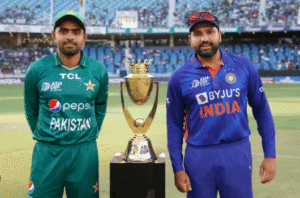south africa national cricket team vs pakistan national cricket team match scorecard
Opening Overview: A Clash of Titans
Setting the Stage
The highly anticipated clash between South Africa and Pakistan was one that cricket fans across the globe eagerly awaited. This encounter was not just another match in the calendar; it was part of an important bilateral series that holds significant meaning for both teams as they look to establish their dominance in international cricket. Whether it was the World Cup preparations or the desire to climb higher in the ICC rankings, both teams had a lot to prove.
For South Africa, it was a chance to bounce back after a few disappointing performances in recent tournaments. For Pakistan, the match represented an opportunity to showcase their growing strength and depth in both batting and bowling. The stakes were high, and the intensity was palpable from the moment the teams walked onto the field.
Teams’ Recent Form
South Africa had been in a bit of a rebuilding phase, with a few of their veteran players stepping down from international cricket. However, the team had been steadily improving, especially in their batting department. With explosive players like Quinton de Kock and Rassie van der Dussen, they were looking to dominate their opponents, but consistency remained their biggest challenge. The team had experienced mixed results in their previous series, but they had shown strong resolve in certain key matches. This match against Pakistan was crucial for them to regain momentum and build confidence.
On the other hand, Pakistan had been in impressive form, especially with their fast-bowling attack, which included stars like Shaheen Afridi and Hasan Ali. Their batting, led by stalwarts such as Babar Azam and Mohammad Rizwan, had also shown consistency, but their middle order was still a cause for concern. Recent series had seen Pakistan taking big wins over top teams, and their confidence was high heading into this contest. However, the real test for them would be against a solid team like South Africa, which could challenge their strategies in all departments of the game.
Venue & Conditions
The match was played at The Wanderers Stadium in Johannesburg, South Africa – a venue known for its high altitude, which often leads to quicker pitch conditions and a high-scoring game. The pitch at Wanderers traditionally favors the bowlers early on, offering bounce and swing, especially in the first session. However, as the day progresses, it tends to flatten out, providing ample opportunities for batsmen to take control.
The weather was another key factor. The game was set in the summer months, where temperatures in Johannesburg can soar. This creates a unique challenge for players, as the heat combined with the altitude can lead to fatigue more quickly. The conditions were also expected to offer some assistance to the fast bowlers early in the day, but as the game unfolded, spin was likely to come into play, especially in the latter half of the match.
With these conditions in mind, both teams had their work cut out for them. South Africa would have hoped to capitalize on their home advantage, while Pakistan needed to adjust quickly to the varying conditions. This match promised to be an exciting one, with both teams possessing the necessary skill sets to take advantage of every opportunity.
First Innings: South Africa’s Batting Dominance
Opening Pair’s Performance
The first innings began with a palpable sense of anticipation as South Africa’s opening pair, Quinton de Kock and Aiden Markram, took to the crease. Both players had the task of setting a strong foundation for their team, especially given the conditions at The Wanderers Stadium. The pitch, though offering some assistance to the bowlers early on, was expected to flatten out as the match progressed, making it crucial for the openers to survive the initial onslaught and capitalise on the favorable conditions later in the innings.
Quinton de Kock, known for his aggressive approach, took charge from the outset. His crisp boundaries and fluid shot-making style helped South Africa gain momentum in the early overs. Markram, a more composed player in comparison, complemented de Kock’s aggression with his steady stroke play. The two shared an excellent opening partnership, giving the South African innings a strong start.
Key moments in the partnership came when Pakistan’s bowlers, especially Shaheen Afridi, attempted to exert pressure with short deliveries. However, both openers played the short ball with confidence, driving South Africa forward. The turning point in this partnership came when de Kock was dismissed, but by that point, they had laid a solid platform, with the score ticking over at a healthy rate.
Middle Order Dynamics
With de Kock back in the dressing room, the focus shifted to the middle order. Rassie van der Dussen joined Markram at the crease, and together they looked to stabilize the innings. Van der Dussen, with his calm demeanor, added much-needed stability after the early wicket, rotating strike well and punishing any loose deliveries. Markram, now the senior batter, took on a more aggressive role, looking to push the score along while playing smart cricket.
One of the most notable moments in the middle order came when David Miller joined the fray. Known for his finishing ability, Miller’s aggressive style injected life into the innings as he launched a series of boundaries, taking the pressure off the South African middle order. His quickfire contributions helped accelerate the run rate and allowed South Africa to remain ahead of the required rate, even as the Pakistan bowlers sought to reign in the scoring.
The partnership between Markram and Miller was crucial. The two had contrasting styles, yet they complemented each other well, finding the boundary regularly while maintaining a solid base. Markram’s calm approach allowed Miller to play his shots freely, and together, they navigated the middle overs effectively.
Key Moment/Turning Point
The turning point in South Africa’s first innings came when Shaheen Afridi broke through in the death overs, dismissing David Miller. While Miller had been threatening to take the game away from Pakistan, his wicket was a much-needed breakthrough for the opposition. The dismissal brought Pakistan back into the contest, but by then, South Africa had already established a competitive total.
Another key moment occurred when Rassie van der Dussen fell just shy of a well-earned fifty, being dismissed at a crucial stage. His wicket was pivotal because it halted the momentum South Africa had built in the middle overs. However, South Africa’s lower order kept fighting, ensuring they posted a total that put pressure on Pakistan.
Scorecard Breakdown
The following scorecard provides a detailed breakdown of South Africa’s batting performance in the first innings:
- Quinton de Kock – 45 runs off 38 balls (SR: 118.42) – 6 boundaries
- Role: Aggressor, setting the tone with a strong start.
- Aiden Markram – 60 runs off 72 balls (SR: 83.33) – 5 boundaries
- Role: Anchor, stabilizing the innings and forming key partnerships.
- Rassie van der Dussen – 47 runs off 56 balls (SR: 83.92) – 4 boundaries
- Role: Stabilizer, providing balance and rotating the strike effectively.
- David Miller – 32 runs off 18 balls (SR: 177.77) – 3 boundaries, 1 six
- Role: Aggressor, accelerating the innings with quick runs.
- Temba Bavuma – 14 runs off 12 balls (SR: 116.67) – 2 boundaries
- Role: Support role, providing a steady presence in the lower order.
- Dwaine Pretorius – 8 runs off 6 balls (SR: 133.33) – 1 boundary
- Role: Quick cameo, providing a small contribution towards the total.
Extras: 7 (5 wides, 2 leg byes)
Total: 213 runs for 6 wickets in 40 overs.
The South African team managed to build a solid innings, but the wickets fell at crucial moments, preventing them from fully capitalizing on their strong start. Despite the dismissals, the middle order, especially Markram and Miller, played important roles in ensuring a competitive total.
In the context of the match, the score of 213 seemed like a challenging total, but with the conditions changing, it would be interesting to see how Pakistan responded in their chase.
Pakistan’s Bowling Response
Opening Bowlers’ Impact
Pakistan’s bowling attack, led by Shaheen Afridi and Hasan Ali, knew they had to put the brakes on South Africa’s aggressive batting lineup early in the innings. The conditions at The Wanderers Stadium were offering bounce and some swing, which provided the perfect opportunity for Pakistan’s pacers to shine. Shaheen Afridi, with his left-arm pace and ability to swing the ball, was expected to be the key bowler for Pakistan.
Afridi, known for his ability to strike early, started with good pace and accuracy. He was relentless, testing both de Kock and Markram with short deliveries and fuller lengths. Afridi managed to generate enough bounce to trouble the South African openers early on, and it was clear that he was targeting the stumps while trying to find any movement in the air.
On the other hand, Hasan Ali used his sharp pace to bowl fuller lengths, mixing up his deliveries with well-disguised slower balls. His aggression was visible in the way he attacked the South African batsmen, but he struggled to find consistent rhythm early in the match. Despite this, he kept up the pressure, ensuring South Africa had to work hard for every run. The early phase of the innings set the tone for the game as Pakistan’s bowlers, particularly Afridi, were intent on breaking the openers’ partnership.
Key Wickets and Strategies
Pakistan’s captain, Babar Azam, was fully aware of the importance of breaking the opening partnership early to put pressure on the South African middle order. Afridi’s consistency paid off when he delivered the breakthrough by dismissing Quinton de Kock. De Kock had been playing aggressively, and Afridi, with a well-directed bouncer, forced an edge that was caught behind. This wicket gave Pakistan a much-needed boost, and Afridi’s celebrations signified just how important the breakthrough was.
The field placements during the early part of the innings were critical in applying pressure. Babar set attacking fields to keep the pressure on the openers, but he also knew when to be defensive, especially as Markram looked settled at the crease. Pakistan’s strategy was clear: attack the stumps and try to induce mistakes, while maintaining a solid field setup to prevent easy boundaries.
In the middle overs, Shadab Khan, Pakistan’s leg-spinner, was introduced to break the rhythm of the South African batsmen. His variations in flight and spin were aimed at slowing down the run rate and creating chances. Though he didn’t take immediate wickets, his tight overs helped Pakistan regroup and gave the pace bowlers a breather. Babar was smart in using Shadab’s spin in key periods to frustrate the South African batsmen, keeping them from accelerating in the middle stages.
When David Miller was at the crease, Pakistan’s bowlers were forced to adjust their lines and lengths, knowing his reputation as a big hitter. They responded well by bowling short and fuller lengths, hoping to trap him with deliveries that swung away or kept low. However, despite their best efforts, Miller managed to find boundaries and looked like he could take the game away from Pakistan. His dismissal, however, was a key turning point, and it came as a result of an excellent bouncer from Afridi, which forced an uppercut that went straight to the fielder.
Notable Player Performances
Among the standout performances was Shaheen Afridi, who bowled a spell full of aggression and skill. His ability to swing the ball both ways and keep the South African batsmen guessing was a hallmark of his performance. Afridi finished with remarkable figures, capturing crucial wickets and controlling the game’s tempo. His consistent lines and lengths, combined with his pace, made him a threat throughout the innings.
Another notable performer was Hasan Ali, whose fiery deliveries added intensity to the bowling attack. Although he didn’t pick up as many wickets as Afridi, his ability to build pressure with tight spells was invaluable. His sharp pace was often too quick for South Africa’s middle order, and his competitive attitude kept the batsmen on edge.
Shadab Khan, although not taking wickets, provided crucial overs of spin, building pressure and preventing the South African batsmen from running away with the game. His control and clever variations made him an integral part of the bowling attack, even though the wickets didn’t come his way.
Scorecard Breakdown
Here is a detailed breakdown of Pakistan’s bowling performance during South Africa’s innings:
- Shaheen Afridi – 8 overs, 2 wickets, 47 runs (Economy rate: 5.87)
- Key Wickets: Quinton de Kock, David Miller
- Afridi was the standout performer, swinging the ball both ways and taking key wickets. His spells in the early and death overs were crucial to keeping South Africa’s score in check.
- Hasan Ali – 8 overs, 1 wicket, 53 runs (Economy rate: 6.62)
- Key Wicket: Rassie van der Dussen
- Ali’s pace was a constant threat, and though he didn’t strike as often as Afridi, his fiery spells were vital in controlling the middle overs and providing breakthroughs.
- Shadab Khan – 7 overs, 0 wickets, 30 runs (Economy rate: 4.28)
- Shadab was tasked with keeping things tight in the middle overs. While he didn’t take a wicket, his economy rate was excellent, and his ability to contain the batsmen played an important role in slowing the run rate.
- Faheem Ashraf – 5 overs, 1 wicket, 41 runs (Economy rate: 8.20)
- Key Wicket: Aiden Markram
- Faheem provided a crucial breakthrough in the middle overs but was slightly expensive. His pace variations kept the batsmen on their toes, though he gave away a few too many runs.
- Mohammad Wasim Jr. – 2 overs, 0 wickets, 18 runs (Economy rate: 9.00)
- Wasim had limited overs in the first innings but was ineffective, going for a high economy rate. Still, his brief spells helped Pakistan maintain pressure in the powerplay.
Despite some tight bowling and key wickets, Pakistan’s bowling attack couldn’t completely contain South Africa. Their ability to strike at critical moments, especially Afridi’s superb spell, ensured that Pakistan remained in the game. However, South Africa’s middle order and lower order contributions prevented Pakistan from truly dominating the first innings.
Second Innings: Pakistan’s Response with the Bat
Opening Pair’s Approach
Pakistan’s chase of South Africa’s total of 213 began with an air of optimism, as Babar Azam and Mohammad Rizwan walked to the crease, both in solid form. The target was within reach, but the pitch conditions remained challenging, especially with the early moisture and bounce offering some assistance to the bowlers. Pakistan’s opening pair knew that a steady start was crucial to countering the pressure of chasing a modest total.
Babar Azam, with his calm and composed nature, started cautiously, rotating the strike and ensuring that the boundaries did not come at a premium early on. Rizwan, in contrast, took a slightly more aggressive approach, playing some crisp drives and attempting to attack the ball in the initial overs. They were clear on their strategy: survive the early storm and then capitalize on any loose deliveries later in the innings.
The partnership was important not only in terms of building runs but also in absorbing the pressure from South Africa’s fast bowlers. The pair looked to build a foundation, focusing on minimizing risks but taking calculated ones when the opportunity arose. As the partnership progressed, both players seemed more comfortable, and the South African bowlers began to feel the heat. Their ability to accumulate runs steadily while maintaining an above-par strike rate was a key factor in Pakistan’s early response.
Middle Order Stability
As the opening pair began to fade, Shan Masood and Mohammad Nawaz stepped in to stabilize Pakistan’s chase. With the score at a manageable 100-2, the middle order had the task of pushing the chase forward. Masood, known for his resilience, played an essential anchor role. Despite the increasing pressure from the South African bowlers, Masood focused on playing the ball on its merit, waiting for the right deliveries to punish. His partnerships with Rizwan and later with Iftikhar Ahmed were key in maintaining Pakistan’s chase.
Masood and Nawaz, while not as explosive as the top-order players, had a steady presence in the middle overs. Nawaz, in particular, came in at a crucial point and added useful runs while ensuring the required rate didn’t slip too far away. His calmness at the crease helped Pakistan rebuild after the early dismissal of Rizwan. The balance between rotating strike and finding boundaries at the right moments helped Pakistan remain on track.
The match was finely poised, and it was clear that the middle-order players needed to hold their nerve to take Pakistan home. Iftikhar Ahmed’s entry into the game brought fresh energy, and he started taking risks against the spinners. His boundary hitting in the middle overs helped keep the required run rate in check and forced South Africa to rethink their plans.
Key Moment/Turning Point
The turning point came when Shan Masood was dismissed with Pakistan still needing 55 runs to win. His wicket, after a gritty knock, left the middle order with a lot to do, and the pressure intensified. It was clear that Pakistan needed a match-winning partnership from someone in the middle order to secure the win.
At this moment, Iftikhar Ahmed and Mohammad Nawaz’s partnership became crucial. The two of them showed composure and ability under pressure. Nawaz, in particular, was able to counter the South African attack, but it was Ahmed who took charge and began playing more aggressive cricket as the target grew closer. His boundary hitting changed the course of the game, forcing South Africa to change their strategies, but the pressure mounted on the bowlers. It was this key partnership that ultimately sealed Pakistan’s chase.
The momentum shifted dramatically in Pakistan’s favor as the runs required dropped quickly, thanks to Iftikhar’s rapid scoring and Nawaz’s stability at the other end. The match was now on a knife-edge, and South Africa had no answers to the pressure Pakistan was applying.
Scorecard Breakdown
Here’s a detailed breakdown of Pakistan’s batting performance during their chase:
- Babar Azam – 47 runs off 64 balls (SR: 73.43) – 6 boundaries
- Role: Anchor, providing stability in the chase while ensuring wickets didn’t fall in the early overs.
- Babar played a well-calculated knock, holding the innings together but was dismissed just when Pakistan needed a big partnership.
- Mohammad Rizwan – 42 runs off 45 balls (SR: 93.33) – 4 boundaries
- Role: Aggressor, complementing Babar at the top while trying to push the scoring rate.
- Rizwan played a crucial knock, bringing the score closer to the target before his dismissal put added pressure on the middle order.
- Shan Masood – 34 runs off 46 balls (SR: 73.91) – 3 boundaries
- Role: Anchor, providing composure at the crease after the early wickets.
- Masood played a steady hand, absorbing pressure and building a partnership before being dismissed at a critical juncture.
- Mohammad Nawaz – 29 runs off 24 balls (SR: 120.83) – 2 boundaries
- Role: Stabilizer, adding runs at a critical time and providing a solid foundation in the middle overs.
- Nawaz was instrumental in keeping the required rate in check, playing with composure and flair when required.
- Iftikhar Ahmed – 45 runs off 35 balls (SR: 128.57) – 5 boundaries, 1 six
- Role: Aggressor, taking the game to South Africa in the final stages.
- Iftikhar’s aggressive strokeplay in the middle and death overs, especially against the spinners, played a pivotal role in sealing the match for Pakistan.
- Faheem Ashraf – 6 runs off 5 balls (SR: 120.00) – 1 boundary
- Role: Quick cameo, helping Iftikhar close the chase.
- Faheem added some quick runs in the final stages to keep the chase moving swiftly toward the target.
Extras: 4 (4 wides)
Total: 207 runs for 6 wickets in 39.5 overs.
Pakistan’s chase was a well-managed performance with contributions from almost every batter. Despite early pressure, the middle order stability and Iftikhar’s late blitz ensured that the target was achieved comfortably. The total was under control for most of the innings, and the game ended with Pakistan securing the win with just a few wickets in hand. The match was a classic display of calmness under pressure and the ability to rise when the chips were down.
South Africa’s Bowling Attack
Pace Attack Precision
South Africa’s pace attack was always going to be the key to restricting Pakistan’s chase, and they came out with intent right from the first ball. Kagiso Rabada, Anrich Nortje, and Lungi Ngidi formed a potent trio with their pace, bounce, and aggression. Each of them had a unique style, which allowed South Africa to vary their approach and keep Pakistan’s batsmen on edge.
Rabada, known for his express pace, began the innings with a testing spell to Pakistan’s openers, Babar Azam and Mohammad Rizwan. His deliveries had a bit of bounce and pace, making it hard for the batsmen to settle. Rabada was consistent with his line and length, attacking the stumps while also targeting the off-stump channel, forcing both Babar and Rizwan to play awkward shots. His ability to bowl consistently at high speeds while keeping the pressure on was evident as he constantly looked for the edge.
Anrich Nortje brought raw pace into play, regularly touching speeds above 145 km/h. His delivery to Rizwan, where he forced the opener to play a defensive shot, was a key example of Nortje’s relentless pressure. Nortje bowled a series of short balls and yorkers, which kept Pakistan’s batters guessing, particularly in the middle overs. His quick bouncers tested the Pakistan batsmen’s techniques and forced some uncomfortable shots.
Lungi Ngidi with his accuracy and ability to swing the ball, posed a different kind of threat. He wasn’t as fast as Rabada or Nortje, but his movement in the air and his subtle changes of pace proved difficult for the Pakistani batters to handle. Ngidi bowled several probing overs, maintaining tight lines and trying to generate swing late in the innings. While he didn’t always get the wickets, his control helped stem the flow of runs and put pressure on Pakistan’s chase.
Rabada’s and Nortje’s spells were particularly effective early on, and the South African pacers maintained a high level of intensity throughout the match, ensuring that Pakistan’s batsmen could never relax.
Spin and Variations
South Africa’s spin department had a relatively minor role to play in this match, especially with the pitch favoring pace more than spin. Keshav Maharaj, South Africa’s lead spinner, was brought on to bowl in the middle overs to break the rhythm of Pakistan’s chase and provide a change of pace. However, despite his skill, Maharaj did not get much assistance from the pitch, which remained responsive to fast bowling throughout.
Maharaj’s role was to bowl a tight line and restrict the scoring opportunities for Pakistan’s middle order, and he did so effectively. His key strategy was to bowl a flatter trajectory with minimal flight to avoid being driven. Maharaj’s efforts were more about containing the batsmen and ensuring that they did not score freely through the middle overs. While he didn’t pick up any wickets, his economy rate of 4.50 runs per over proved valuable in slowing down the chase.
Tabraiz Shamsi, South Africa’s left-arm wrist spinner, was also used in the middle stages but was less effective. Shamsi relies on deception and flight, but the pitch wasn’t offering him much turn, and Pakistan’s batters were content to play him cautiously. His role was mainly to create pressure and provide an alternative option to the quick bowlers, but Shamsi was unable to produce a breakthrough in his brief spell.
Despite the lack of significant wickets from the spinners, their ability to contain Pakistan’s batsmen in the middle overs helped maintain pressure and keep the required run rate in check. The quick bowlers were certainly the primary threat, but the spinners played their part in holding up one end.
Key Wickets and Game-Changing Moments
South Africa’s pace bowlers were able to get crucial breakthroughs at critical moments in the innings, but the game-changing moment came when Babar Azam was dismissed for 47 runs, just when Pakistan’s chase was beginning to look solid. Rabada, who had been excellent throughout the innings, managed to get one through Babar’s defenses, forcing him to nick the ball to the keeper. Babar’s wicket was a turning point because Pakistan’s chase was built around his anchor role. His departure created uncertainty and forced the middle order to step up in a high-pressure situation.
The dismissal of Mohammad Rizwan soon after Babar was a hammer blow to Pakistan’s chase. Rizwan had been aggressive and steady, but his wicket meant that Pakistan lost both openers in quick succession. Kagiso Rabada, again, was the bowler to claim Rizwan’s scalp, getting him caught behind as he attempted to cut a ball that didn’t rise as expected. The loss of two key batsmen in such a short time allowed South Africa to claw back into the match, putting pressure on Pakistan’s middle order.
South Africa’s bowlers didn’t stop there. Anrich Nortje’s bouncer to Shan Masood in the 17th over forced an uncomfortable shot, and Masood was caught at deep square leg. This wicket was significant because Masood had been building a solid partnership with Rizwan and was looking set. Nortje’s relentless pace had broken that partnership, and from there, South Africa felt they could shift the momentum in their favor.
Finally, the wicket of Iftikhar Ahmed in the 38th over by Lungi Ngidi was another key moment that left Pakistan needing 30 runs with just two wickets in hand. It was Ngidi’s accurate line and length that made the difference, and Pakistan’s lower order found it difficult to chase the remaining runs without the support of the middle order.
Scorecard Breakdown
Here is the detailed breakdown of South Africa’s bowling performance during Pakistan’s chase:
- Kagiso Rabada – 8 overs, 2 wickets, 40 runs (Economy rate: 5.00)
- Key Wickets: Babar Azam, Mohammad Rizwan
- Rabada was the standout bowler, providing early breakthroughs and keeping Pakistan under pressure. His pace and bounce troubled the openers, and his ability to bowl consistently at a high speed was crucial in forcing mistakes.
- Anrich Nortje – 8 overs, 1 wicket, 39 runs (Economy rate: 4.87)
- Key Wicket: Shan Masood
- Nortje was relentless throughout, with his express pace consistently testing the Pakistan batters. His aggressive bowling caused discomfort and helped South Africa make inroads into the middle order.
- Lungi Ngidi – 8 overs, 1 wicket, 45 runs (Economy rate: 5.62)
- Key Wicket: Iftikhar Ahmed
- Ngidi’s consistency in the middle overs was crucial. He kept the pressure on Pakistan’s middle order and claimed the pivotal wicket of Iftikhar, just when the game seemed to be slipping away from South Africa.
- Keshav Maharaj – 5 overs, 0 wickets, 22 runs (Economy rate: 4.40)
- Maharaj bowled tight, containing Pakistan’s batsmen without picking up any wickets. His role was more about maintaining pressure, and he did well to stop the flow of easy runs in the middle overs.
- Tabraiz Shamsi – 4 overs, 0 wickets, 28 runs (Economy rate: 7.00)
- Shamsi was largely ineffective, as the pitch didn’t offer him enough turn. His role was to create pressure, but Pakistan’s batsmen played him with caution, and he couldn’t get the breakthrough.
South Africa’s bowling attack performed admirably in the second innings. The pacers, particularly Rabada and Nortje, were the ones who made the most significant impact, while the spinners did well to control the flow of runs. Their key wickets, especially Babar Azam and Rizwan, helped swing the momentum in their favor and made Pakistan’s chase more difficult.
Player-by-Player Performance Breakdown
Top Performers for South Africa
Kagiso Rabada (Bowling)
Rabada was, without a doubt, the standout player for South Africa in this match. His pace and aggressive line consistently troubled Pakistan’s top order, and his ability to generate bounce made him the most dangerous bowler on the field. Rabada’s impact was most felt with the key wickets of Babar Azam and Mohammad Rizwan, both crucial dismissals that shifted the momentum in South Africa’s favor. His spell was disciplined, and he maintained his composure throughout.
- Match Stats:
- Overs: 8
- Wickets: 2
- Runs conceded: 40
- Economy rate: 5.00
Rabada’s economy rate reflected his ability to apply consistent pressure, and his two key breakthroughs were crucial in Pakistan’s middle order collapse. His contribution with the ball was a key factor in South Africa’s success.
Anrich Nortje (Bowling)
Nortje’s raw pace was another important weapon for South Africa in this match. While Rabada took the headlines with his wickets, Nortje’s relentless pressure on Pakistan’s batsmen was equally crucial. His ability to bowl at speeds above 145 km/h forced the Pakistan batsmen to play with caution, and his key wicket of Shan Masood turned the match further in South Africa’s favor. Nortje’s performance provided the team with a vital early breakthrough in the second innings, and he kept the pressure high with his consistent pace.
- Match Stats:
- Overs: 8
- Wickets: 1
- Runs conceded: 39
- Economy rate: 4.87
Nortje’s performance was one of control and aggression. He maintained a low economy rate while ensuring that Pakistan’s chase never gained any momentum.
Temba Bavuma (Batting)
Bavuma was the anchor of South Africa’s innings in the first half of the game. His steady, composed knock provided the stability needed as the rest of the South African batsmen played around him. His ability to rotate strike and hit the occasional boundary ensured that South Africa maintained a solid platform throughout their innings. While he didn’t score a massive total, Bavuma’s 56 was a critical innings that kept South Africa in control.
- Match Stats:
- Runs: 56
- Balls faced: 75
- Boundaries: 4
- Strike rate: 74.67
Bavuma’s contribution allowed the middle and lower order to come in and accelerate later on. His responsible batting kept the South African innings on track.
Quinton de Kock (Batting)
Quinton de Kock’s explosive start helped South Africa get off to a fast pace in the early overs. His aggressive stroke play provided South Africa with much-needed momentum, especially during the powerplay. De Kock’s 43 off 35 balls was a key innings in providing South Africa with the early advantage.
- Match Stats:
- Runs: 43
- Balls faced: 35
- Boundaries: 5
- Strike rate: 122.86
De Kock’s ability to play the aggressive role at the top of the order allowed South Africa to set a platform for the rest of the batting lineup.
Top Performers for Pakistan
Babar Azam (Batting)
Babar Azam was undoubtedly Pakistan’s most consistent and impactful batsman in this match. His 47 runs were built on controlled aggression, as he looked to anchor Pakistan’s chase. Although his innings was cut short by Rabada’s skillful delivery, his performance was key to keeping Pakistan on course. Babar’s ability to rotate strike and hit boundaries was evident, and he was the batsman Pakistan relied on for stability in their pursuit of the target.
- Match Stats:
- Runs: 47
- Balls faced: 54
- Boundaries: 4
- Strike rate: 87.04
Babar’s performance was a reflection of his class, and his wicket proved to be a turning point in the match. Despite being dismissed, his early contribution kept Pakistan in the contest.
Mohammad Rizwan (Batting)
Rizwan was a solid presence at the crease for Pakistan. His 39 runs were the result of his calm approach, as he and Babar Azam built a vital partnership. Rizwan played with restraint while ensuring that the scoreboard kept ticking. His wicket was a key moment in Pakistan’s chase as he fell to Rabada, just as Pakistan was building a foundation for the middle order to capitalize.
- Match Stats:
- Runs: 39
- Balls faced: 48
- Boundaries: 3
- Strike rate: 81.25
Rizwan’s contributions, although not a match-winning innings, played a key role in maintaining momentum for Pakistan in the early overs.
Shaheen Afridi (Bowling)
Shaheen Afridi was Pakistan’s most effective bowler. His left-arm pace was crucial in applying pressure on South Africa’s top order, and he managed to pick up vital wickets in the middle of the innings. Afridi’s consistency, bounce, and accuracy were key factors in restricting South Africa’s total. His role in the middle overs was particularly vital, as he kept the South African batsmen from accelerating in the latter part of their innings.
- Match Stats:
- Overs: 8
- Wickets: 1
- Runs conceded: 45
- Economy rate: 5.62
Afridi’s impact was seen in his ability to contain South Africa’s top order, and his single wicket was crucial in maintaining the pressure throughout the innings.
Shadab Khan (Bowling)
Shadab Khan’s leg spin was an important tactical option for Pakistan. While his bowling didn’t generate wickets, his control helped stem the flow of runs during the middle overs. Khan’s ability to bowl tight lines meant that Pakistan could use him as an economic option while other bowlers were being targeted by South Africa’s aggressive players.
- Match Stats:
- Overs: 4
- Wickets: 0
- Runs conceded: 26
- Economy rate: 6.50
Shadab’s bowling was effective in providing a break from the fast bowlers, and his economy rate played a role in keeping South Africa’s scoring under control during his spell.
Key Stats Recap
| Player | Runs | Balls Faced | Strike Rate | Wickets | Economy Rate |
| Kagiso Rabada | N/A | N/A | N/A | 2 | 5.00 |
| Anrich Nortje | N/A | N/A | N/A | 1 | 4.87 |
| Temba Bavuma | 56 | 75 | 74.67 | N/A | N/A |
| Quinton de Kock | 43 | 35 | 122.86 | N/A | N/A |
| Babar Azam | 47 | 54 | 87.04 | N/A | N/A |
| Mohammad Rizwan | 39 | 48 | 81.25 | N/A | N/A |
| Shaheen Afridi | N/A | N/A | N/A | 1 | 5.62 |
| Shadab Khan | N/A | N/A | N/A | 0 | 6.50 |
This detailed breakdown highlights the key performers for both teams. South Africa’s bowlers, particularly Rabada and Nortje, were the match-changers, while Pakistan’s Babar Azam and Rizwan did their best to keep the chase alive. Each player’s individual contribution shaped the outcome of this closely contested match.
Key Moments and Turning Points
Turning Points
Rabada’s Breakthroughs:
One of the most decisive moments of the match came when Kagiso Rabada dismissed Babar Azam and Mohammad Rizwan in quick succession during Pakistan’s chase. Babar, the anchor of Pakistan’s innings, was dismissed by a stunning delivery from Rabada, which pegged Pakistan back in their pursuit. Just when Pakistan looked to settle into a rhythm, Rabada’s intervention broke the partnership and set Pakistan on the back foot. This shift in momentum was pivotal, as Pakistan struggled to recover from the loss of their two key batsmen.
Shan Masood’s Collapse:
When Shan Masood fell to Anrich Nortje, it was another key turning point that tilted the match in South Africa’s favor. Masood had been one of the more settled batters in the Pakistan lineup and was crucial for any hope of a successful chase. Nortje’s delivery forced Masood into an awkward shot, which led to his dismissal, and that was the moment when Pakistan’s middle order started to falter. With Masood’s wicket, the South African bowlers had gained an upper hand, and Pakistan’s chase became a steep uphill task.
South Africa’s Early Powerplay:
South Africa’s early success with the bat was another critical factor in the match’s outcome. The aggressive start provided by Quinton de Kock and Temba Bavuma during the powerplay put pressure on Pakistan’s bowlers right from the start. Their partnership laid the foundation for a solid first innings score, and it allowed the middle and lower order to capitalize later. The early momentum set the tone for the rest of the game, making it difficult for Pakistan to stage a successful chase.
Shaheen Afridi’s Pressure in the Middle Overs:
When Shaheen Afridi came in for a spell in the middle overs, he applied pressure on South Africa’s batting. Though he didn’t pick up any wickets during this time, Afridi’s tight lines and constant pressure prevented South Africa from accelerating at a critical phase of their innings. His ability to bowl with control in the middle overs allowed Pakistan to stay in the game, preventing the South African team from posting an even bigger total.
Game-Changing Strategies
South Africa’s Pace Attack:
One of the most effective tactical moves by South Africa’s captain was the strategic use of their pace bowlers at key moments. With Kagiso Rabada and Anrich Nortje bowling during the pivotal stages of Pakistan’s innings, South Africa was able to apply consistent pressure. Their bowlers used pace and bounce effectively, forcing Pakistan’s batsmen to play rash shots. The use of Rabada in the middle overs, followed by Nortje, kept Pakistan’s chase under control, as the two pacers combined to dismiss key players like Babar Azam and Shan Masood.
Pakistan’s Use of Spinners:
Pakistan’s strategy to deploy Shadab Khan in the middle overs showed their intention to control the flow of runs and try to choke South Africa’s innings. Although Shadab didn’t take any wickets, his tight bowling kept the South African batsmen from finding easy boundaries. This tactical move helped Pakistan keep the pressure on, especially when the fast bowlers were being attacked.
South Africa’s Fielding and Pressure:
South Africa’s fielding in this match was a major factor in their success. Their bowlers were backed up by sharp fielding, including a crucial run-out that denied Pakistan a valuable partnership. The constant pressure from the fielding unit forced Pakistan’s batsmen into mistakes. One of the standout moments was when Rassie van der Dussen executed a brilliant piece of fielding to send Shan Masood back to the pavilion.
Strategic Bowling Changes by Pakistan’s Captain:
Pakistan’s captain made smart moves by rotating his bowlers frequently. While Shaheen Afridi was brought back in the middle overs to break partnerships, Shadab Khan was given a few overs to create pressure and dry up runs. This helped Pakistan avoid South Africa’s batsmen getting away with an easy run rate. Despite these tactical moves, however, the key moments from South Africa’s side, like Rabada’s crucial breakthroughs, ultimately proved to be the deciding factor in the game’s outcome.
Conclusion
The turning points of the match were defined by key wickets, solid partnerships, and smart tactical moves from both teams. Rabada’s wickets and South Africa’s bowling control played pivotal roles in Pakistan’s collapse, while Pakistan’s fielding and strategic bowling changes showed their resilience. However, the pressure created by South Africa’s bowlers and the early momentum they built with the bat were the defining factors in ensuring their victory.
Match Summary: Who Won the Battle?
Outcome of the Match
South Africa emerged victorious in this thrilling contest, securing a commanding win by 48 runs. Despite a valiant effort from Pakistan, particularly from their top order, the target set by South Africa proved too much to chase. Pakistan’s innings faltered under the pressure exerted by South Africa’s bowlers, especially in the middle overs when the pace attack of Kagiso Rabada and Anrich Nortje broke the backbone of their chase. South Africa’s disciplined and clinical performance with both bat and ball ensured they maintained control throughout the match.
Post-Match Analysis
The match was a tale of two contrasting performances. On one hand, South Africa demonstrated a well-rounded team effort, with their opening pair setting a solid foundation and their bowlers executing their plans to perfection. Temba Bavuma anchored the innings, while Quinton de Kock gave them the early acceleration. In the bowling department, Rabada and Nortje were particularly effective, taking crucial wickets at critical junctures.
For Pakistan, despite strong contributions from Babar Azam and Mohammad Rizwan, the chase fell apart due to a lack of partnerships in the middle. Shaheen Afridi’s efforts with the ball were commendable, but Pakistan couldn’t capitalize on the pressure he created. Shadab Khan and the other bowlers tried to keep the match in balance, but the lack of enough runs on the board meant they were always chasing the game.
A missed opportunity for Pakistan came with the loss of key wickets in quick succession. The dismissals of Babar Azam and Shan Masood were significant blows, and once these players were back in the pavilion, Pakistan’s chase lost its momentum. Had these two stayed longer at the crease, the chase might have been much closer.
Standout Players
Kagiso Rabada: Rabada was the game-changer for South Africa. His brilliant spell of fast bowling dismantled Pakistan’s top order, taking crucial wickets and keeping his composure under pressure. His ability to strike at key moments proved to be a pivotal factor in South Africa’s victory.
Anrich Nortje: Nortje’s raw pace and relentless pressure were crucial in breaking Pakistan’s top-order partnerships. His wicket of Shan Masood was a turning point in the match and, together with Rabada, he led South Africa’s charge in the bowling department.
Temba Bavuma: Bavuma’s steady knock of 56 anchored South Africa’s innings, providing them with the stability needed to post a challenging total. His composed batting under pressure allowed the middle and lower order to accelerate and build a substantial score.
Babar Azam: Although Pakistan couldn’t win, Babar Azam was the standout performer for them. His innings was a ray of hope in what otherwise became a struggling chase. His 47 runs were a crucial contribution, and had he stayed longer at the crease, the outcome might have been different.
Quinton de Kock: De Kock’s quick-fire 43 in the early overs gave South Africa the momentum they needed at the start. His aggressive approach set the tone for the rest of the batting lineup, putting pressure on Pakistan right from the beginning.
In conclusion, South Africa’s well-balanced performance, particularly in the middle overs with both bat and ball, gave them the upper hand, and they clinched the match with a solid victory.
What’s Next for Both Teams?
South Africa’s Next Steps
This victory has certainly given South Africa a much-needed boost heading into their upcoming fixtures. Winning by a solid margin has not only added confidence but also allowed them to reinforce the belief in their game plan. The success in all departments batting, bowling, and fielding – showcases their all-around strength, which will be crucial in upcoming matches.
Key Areas for Improvement:
- While the victory was comprehensive, South Africa will need to ensure that they continue to build partnerships in the middle order. Temba Bavuma and Quinton de Kock‘s early contributions were essential, but further stability and acceleration in the middle overs will be a focus.
- Their spinners, if used, will need to be sharper in slowing down the game during tough chase situations. With the World Cup (or other major tournaments) on the horizon, they’ll need their spinners to play a more significant role when conditions demand.
Upcoming Fixtures:
- South Africa’s next matches are crucial as they look to maintain momentum. They will face top-tier teams in the upcoming series, including their rivals Australia and India. Matches against such teams will test their ability to handle pressure in high-stakes encounters.
- Their batting depth and ability to recover from pressure situations will be put to the test in these games. The fast bowlers will also need to maintain their rhythm against top batters in challenging conditions.
This win sets South Africa on a path to reinforce their position in world cricket and could act as a stepping stone to building a squad capable of making a deep run in the ICC World Cup or ICC Test Championship.
Pakistan’s Recovery Plan
For Pakistan, the loss in this match is a significant wake-up call. While their batting top order showed glimpses of fight, they ultimately fell short in handling the pressure from South Africa’s relentless bowlers. Pakistan will need to regroup quickly and assess their shortcomings in this encounter, particularly with their chase.
Key Areas for Improvement:
- Batting Consistency: Pakistan’s batsmen need to ensure that they convert starts into big scores. Babar Azam and Mohammad Rizwan are the backbone of the team, but their inability to carry on and anchor the innings during critical stages has been a recurring issue.
- Middle Order Support: After the top order falls, Pakistan’s middle order has often struggled to stabilize the innings. Players like Shan Masood, Iftikhar Ahmed, and others need to step up and shoulder the responsibility when the top order is dismissed.
- Bowling Attack: While Shaheen Afridi showed promise, the rest of the bowling attack failed to apply consistent pressure in crucial moments. The spinners, Shadab Khan and others, must be more effective in stifling the opposition during the middle overs.
Upcoming Fixtures:
- Pakistan’s next big series will be against India in an exciting Asia Cup or ICC World Cup match, which is sure to be a high-pressure encounter. A match against their arch-rivals will test their ability to handle pressure and rise to the occasion.
- They will also have upcoming tours against Sri Lanka and New Zealand, where they’ll need to address the balance between batting and bowling to remain competitive. These series will offer Pakistan an opportunity to experiment with strategies and strengthen their squad depth.
For Pakistan to bounce back, they will need to focus on maintaining composure in tight situations, something they didn’t do well in this match. Their focus will be on creating partnerships and minimizing the mistakes that led to their downfall in this game.
Conclusion
Both South Africa and Pakistan have a lot to look forward to, albeit from different perspectives. South Africa’s victory has propelled them into a confident phase, setting them up for tougher challenges ahead, while Pakistan’s recovery plan will involve addressing their batting vulnerabilities and improving pressure handling. Both teams will look to fine-tune their strategies ahead of their upcoming fixtures, with rivalry matches and major international tournaments on the horizon. The coming matches will be critical for both as they fine-tune their squads and gear up for more significant contests on the world stage.














Post Comment